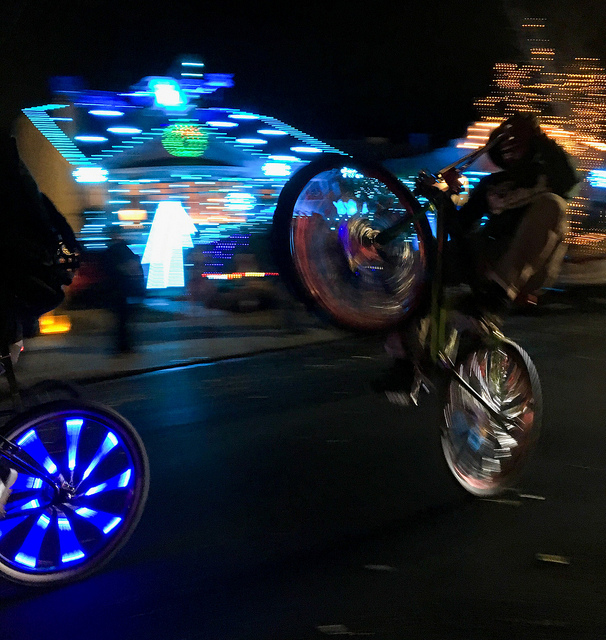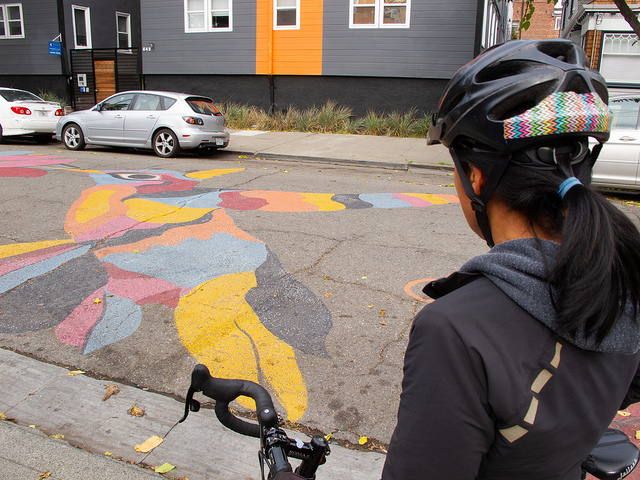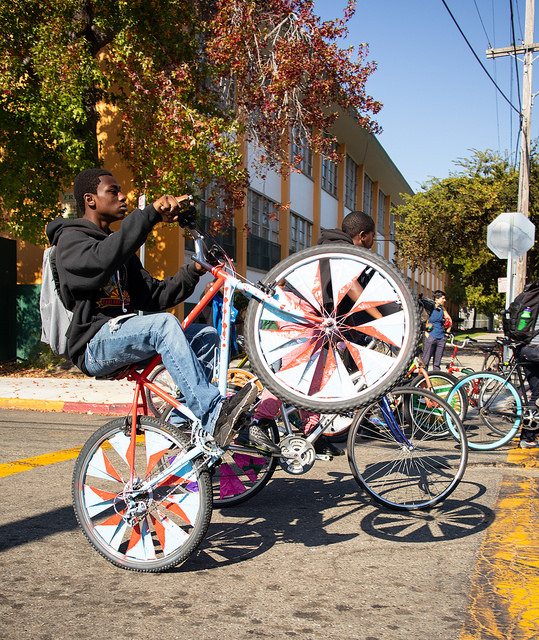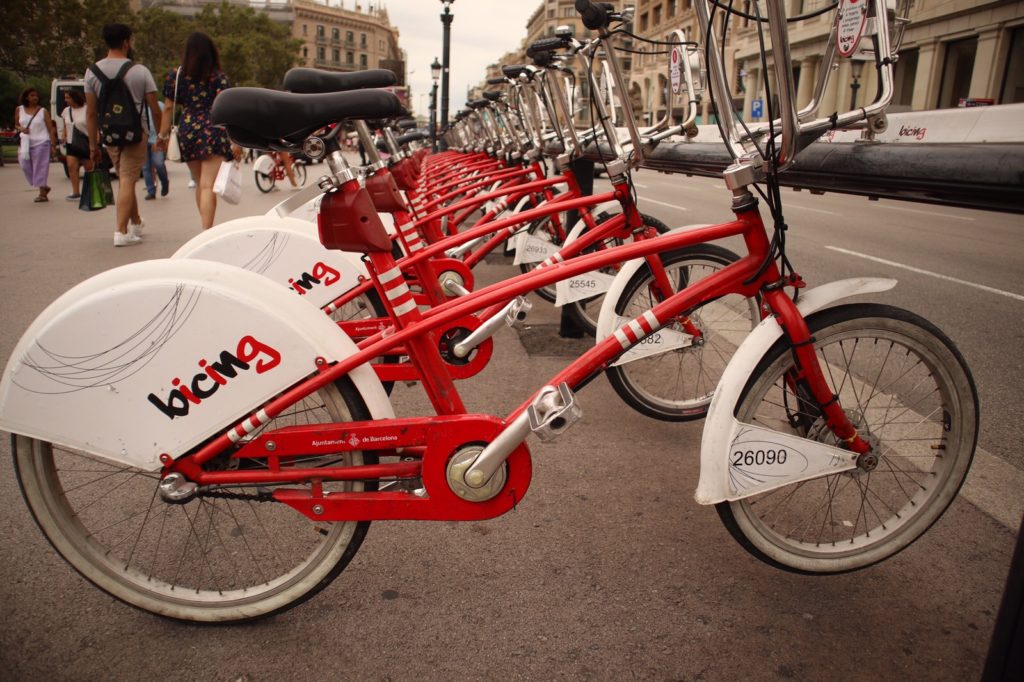The Bike Hub opens in Richmond
There was a ton of stuff going on in Richmond on Martin Luther King Day. Rich City Rides was opening up the Bike Hub, their satellite repair location on the Richmond Greenway. Nakari led a mural project to decorate the new shed, and Najari also got decorated, with a well-deserved Jefferson Award for community service. There were also other projects going on on the Greenway, as well as up at the North Richmond Farm.






